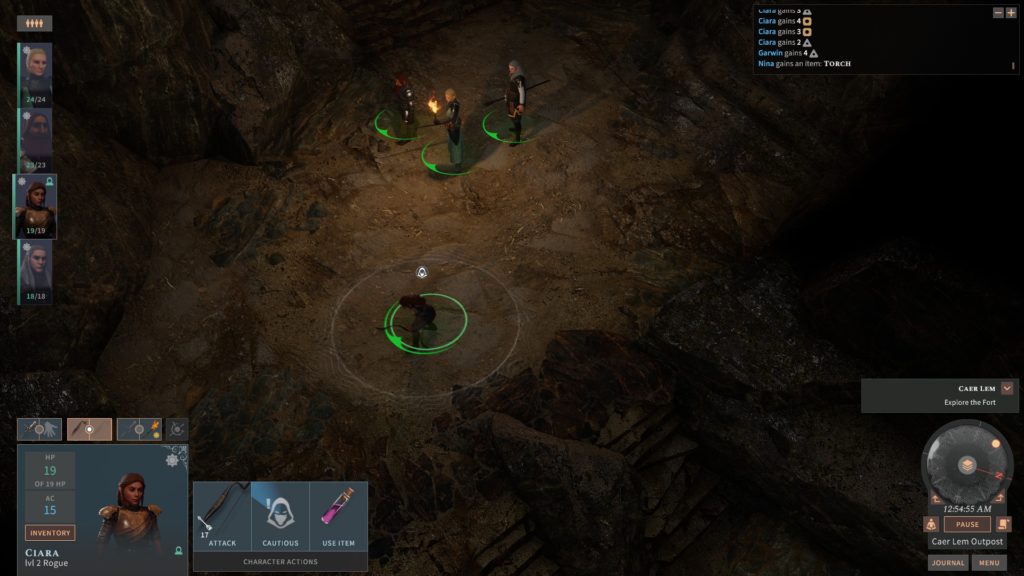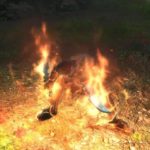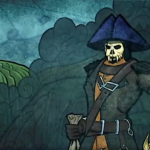This game flew entirely under my radar, but maybe it’s the Dungeons & Dragons 5e-compliant tactical RPG we need right now. Coming out at almost the same time the Baldur’s Gate 3 D&D 5e-compliant game was released to Steam early access, you can’t help but compare them. Like when “Volcano!” and “Dante’s Inferno” came out at the same time, or “Armageddon” and “That Other Giant Asteroid Hitting the Earth Movie” I can’t remember. (“Deep Impact”. Thanks, Google.)
A couple quick comparisons: First, Solasta is a lot cheaper. Second, it’s not made by a huge studio, so it has a lot fewer race and class options from which to choose. And most unusual for me: You get to create all four characters of your core party, instead of just the hero.

Not that I did anything that the game wouldn’t have given me, anyway — although I only looked at the pre-rolled characters long enough to see they existed, when I’d finished creating my party, I saw that they were pretty much the exact same characters the game had suggested would be appropriate — a paladin, cleric, rogue and wizard.
But they were my bog-standard balanced adventuring party.
If I do this again, I think I will probably just go with three wizards and a cleric. Boom boom boom boom scream. There being three wizardly traditions from which to choose — Green magic (druidic magic), Arcane magic (boom), and Loremaster magic (knowledge-focused). Clerics get to choose between Life and Oblivion foci, depending on if they want to just sit around and cast a heal every so often, or become a legendary divine instrument of justice bringing peace to the victimized and terror to their tormentors. Up to them.

Character creation is a blast. You can choose to use a point-based system to carefully nudge your characteristics into a balanced, non-OP character, or you can just keep re-rolling the dice until you get one with 18s across the board. Again, one boring option, one option that should have every goblin you come across spitting “haxx0r!” at you from ruined lungs as it lays dying.
The background and attitudes you choose for your hero influence the relationships they will have with the characters in the group and the NPCs they meet. I made sure to go “out on a limb” here, with a lawful, altruistic paladin, a haughty elven wizard, a grumbling dwarf cleric and a sarcastic halfling rogue. As such, every interaction gives me a wide range of potential responses.
My future three wizard/one cleric team will be all stuck up bastards who refuse to talk to anyone. The quest givers will be all like “so where’s the dude I hired you to find?”. And one of them will raise an eyebrow and almost smile, and then the dude will appear before them, all tied up with magic. The quest giver will have been told up front to just leave the reward in a sack (or sacks, preferably) by the entrance so that their hired servants can come collect it.
The quest giver will be left simultaneously in awe at the vast power and majesty of the three august wizards and their faithful cleric friend with anger issues, and in thankful terror that the wizards found their reward acceptable and let the quest giver live. Because the quest giver knew that it could have gone another way. That’s why there were multiple sacks of reward.

But that’s not the team I’m rolling with this first time out. Although, I’m increasingly thinking it should be.
This being early access, the game is far from complete. The Scavenger guild, a group of people who will come to your dungeon, once you are done with it, and collect and sell all the loot you couldn’t carry, aren’t quite there yet. I’m only doing the first mission, Caer Lem, so I don’t have a full list of things yet to come, and it seems fairly complete at first glance.
The story isn’t nearly as strong as BG3’s. In Solasta, your team meets up in a bar after overcoming a class-appropriate tutorial to make it there (paladin fought wolves, cleric escaped bandits, wizard escaped orcs, rogue stole a gem). Once you’ve all met up, you are deputized by a Council to go be adventurers and given your first mission.
The travel time from the main city to the Caer Lem encounter area was abstracted into an overland map that would keep you updated on how the party was spending their time — gathering spell components and food, crafting spells, making special meals to pass the time, and so on. There was a random encounter on the way vs four bandits. Wizard slept two of them (AE spells don’t appear to hit friendly units… which is new, I guess). Paladin and rogue did for the two left mobile, with the rogue distracting a bandit while the paladin blocked retaliatory strikes against the rogue. Cleric and wizard meanwhile finished off the sleepers.
The approach to Caer Lem was up a cliffside, where barricades had been placed, allowing both goblin enemies and our heroic few to each have some measure of protection on their way up to the fort.
Once there, the rogue detected footprints that we followed to a goblin-infested cave, the Lair of Filth, and that is where I ended the night. (We’d spent most of the night binging a mahjong anime, as one does).
More impressions as I delve more deeply into the game.




